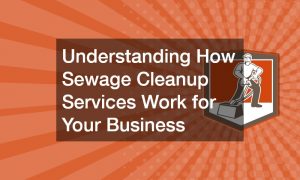- An Emergency Response Plan (ERP) is vital for storm preparedness and effective post-storm response.
- Professional services can identify vulnerabilities, provide structural reinforcement, and manage post-storm restoration.
- Business insurance protects against the financial implications of storm damage, covering physical damage and lost income.
- Proactive measures like ERP, professional services, and insurance safeguard businesses against storms.
Storms can wreak havoc on business establishments, causing immense physical damage and significant financial loss. The potential for damage from collapsed roofs to destroyed inventory is vast, and the repercussions can be staggering. Nearly 40% of small businesses never reopen their doors after a disaster, making it vital to ensure that your business remains protected against it, even if storms are unpredictable.
Furthermore, a report from the Institute for Business and Home Safety states that an estimated 25% of businesses that close due to a significant event, such as a storm, do not reopen. Hurricanes can also disrupt essential services and infrastructure, leading to operational delays that cripple a company’s supply chain and ability to deliver goods and services. Thus, businesses must be prepared for such eventualities and take proactive steps toward storm damage prevention.
Unfortunately, even with preventive measures, storms are an unpredictable force of nature. Businesses must be prepared to respond quickly and effectively if disaster strikes. Here are a few recommendations for protecting your business against a storm:
Establish an Emergency Response Plan

An Emergency Response Plan (ERP) is crucial to business storm preparedness. It’s an organized action plan to minimize damage and ensure safety during and after a storm. With an effective ERP, companies can respond promptly and efficiently, reducing the potential for damage and loss.
Identify Potential Threats
Begin by identifying the types of storms and other natural disasters your business location is prone to. Understanding your risk profile will help you develop an effective response plan tailored to your needs.
Designate Emergency Roles and Responsibilities
Assign roles and responsibilities to your employees. This ensures that everyone knows exactly what to do in a storm. This might include designating an emergency coordinator and backup who will execute and supervise the ERP.
Develop Communication Strategies
In the event of a storm, transparent and timely communication is essential. Establish a system for notifying employees of a potential storm and instructing them on what steps to take. This could be via email, text message, or a dedicated emergency communication application.
Regularly Review and Update Your Plan
Finally, regularly review and update your ERP to accommodate business structure or location changes. Regular drills can also help ensure everyone is familiar with the procedures and can respond appropriately when a storm hits.
Seek Professional Services

Securing professional services for storm preparation and damage repair can be a decisive factor in safeguarding your business assets and ensuring rapid recovery post-storm. Experts offer a wealth of knowledge and experience in disaster management, helping to identify potential vulnerabilities and implement practical solutions.
For instance, a professional risk assessment service can provide a detailed analysis of your establishment’s susceptibility to storm damage. Structural engineers can evaluate the integrity of your building and recommend necessary reinforcements to withstand strong winds and heavy rainfall.
Furthermore, storm damage restoration services play a crucial role in the aftermath of a storm. These professionals are equipped to handle water extraction, damage repair, and mold remediation, significantly reducing the downtime and financial impact caused by storm-related damage. Since flooding can be detrimental to the floors and machines, having 24-hour emergency restoration services might be necessary. Those services can ensure your business operations will not suffer any longer from water damage.
Secure Business Insurance
Securing business insurance is a prudent step in protecting your company from the financial implications of storm damage. Different insurance policies cover various aspects of storm-related damage. For instance, property insurance typically covers physical damage to your business premises, such as structural damage, broken windows, and damaged signage. Inventory and equipment insurance covers damage or loss of essential business inventory or equipment.
Moreover, business interruption insurance can be a lifesaver. This insurance type compensates for lost income and operating expenses if your business cannot operate due to storm damage. It can cover employee wages, rent or lease payments, and even the costs of running from a temporary location.
Specific storm insurance may be available in areas prone to severe storms or hurricanes. This policy can cover exclusions from your standard insurance, offering a comprehensive shield against storm-related damages.
Final Thoughts
No business is immune to the ravages of storms and other natural disasters. Taking proactive steps to protect your business from the financial repercussions of storm damage can be a lifesaver in times of need. Establishing an emergency response plan, seeking professional services, and securing adequate insurance are critical considerations for safeguarding your business against a storm.



